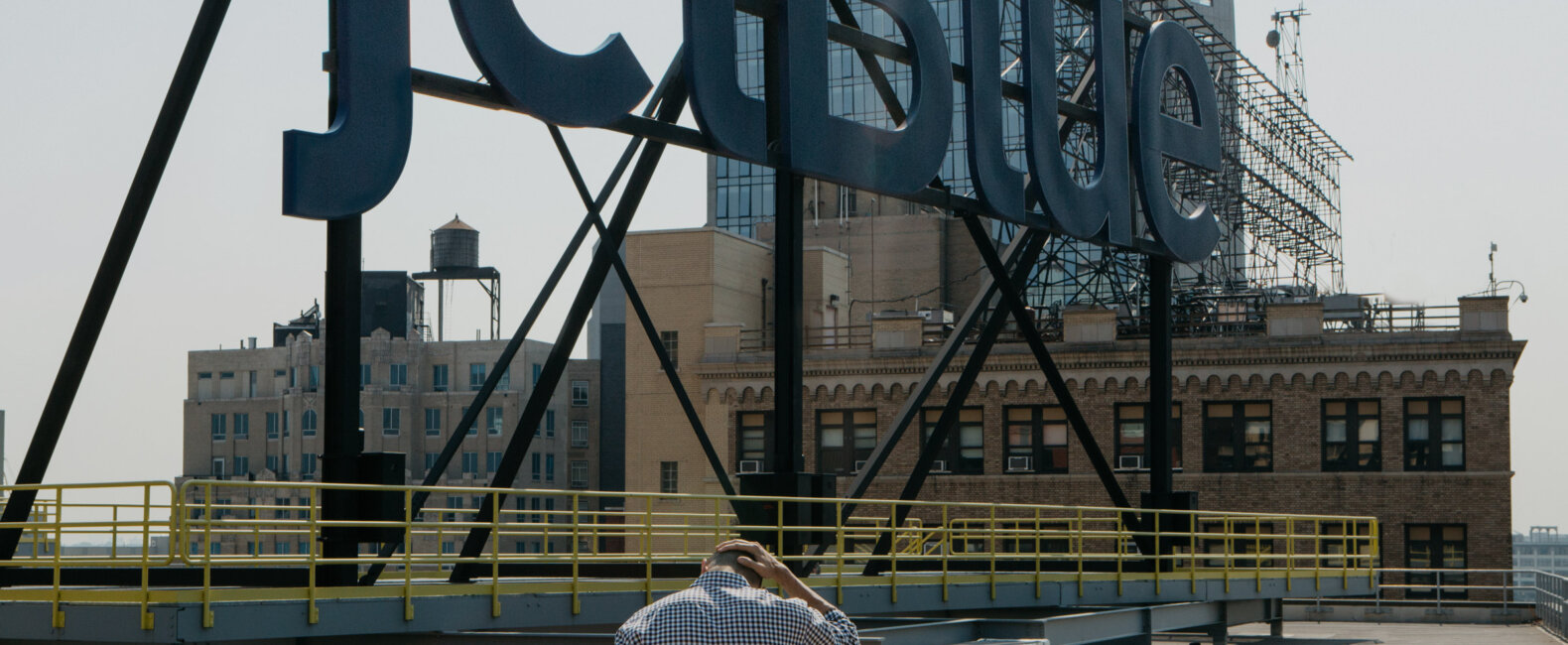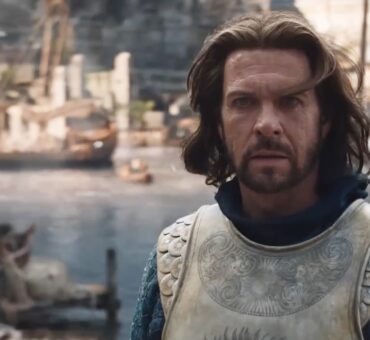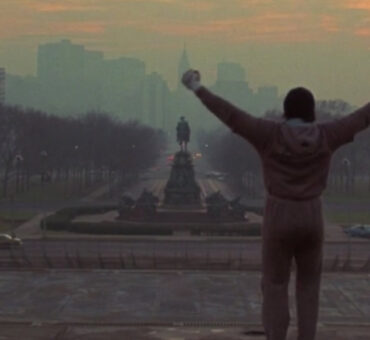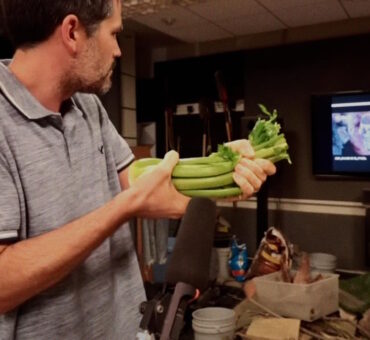Inside one of the world’s largest airlines, a dedicated group of in-house filmmakers is hard at work producing a steady stream of high-quality branded content. The JetBlue film team’s work — particularly its recent Flight Etiquette series — has gotten a lot of attention, with write-ups in major publications like Mashable, Fortune, and TIME. They’ve also worked as a second unit for airport scenes on projects ranging from Ricki and the Flash to Modern Family. We’re proud to provide their team with music, and we’re proud that we helped them define the JetBlue sound. We talked with Creative Manager Jonathan Weitz and his team about their history, their work, and how they stay agile and creative within a corporate environment.
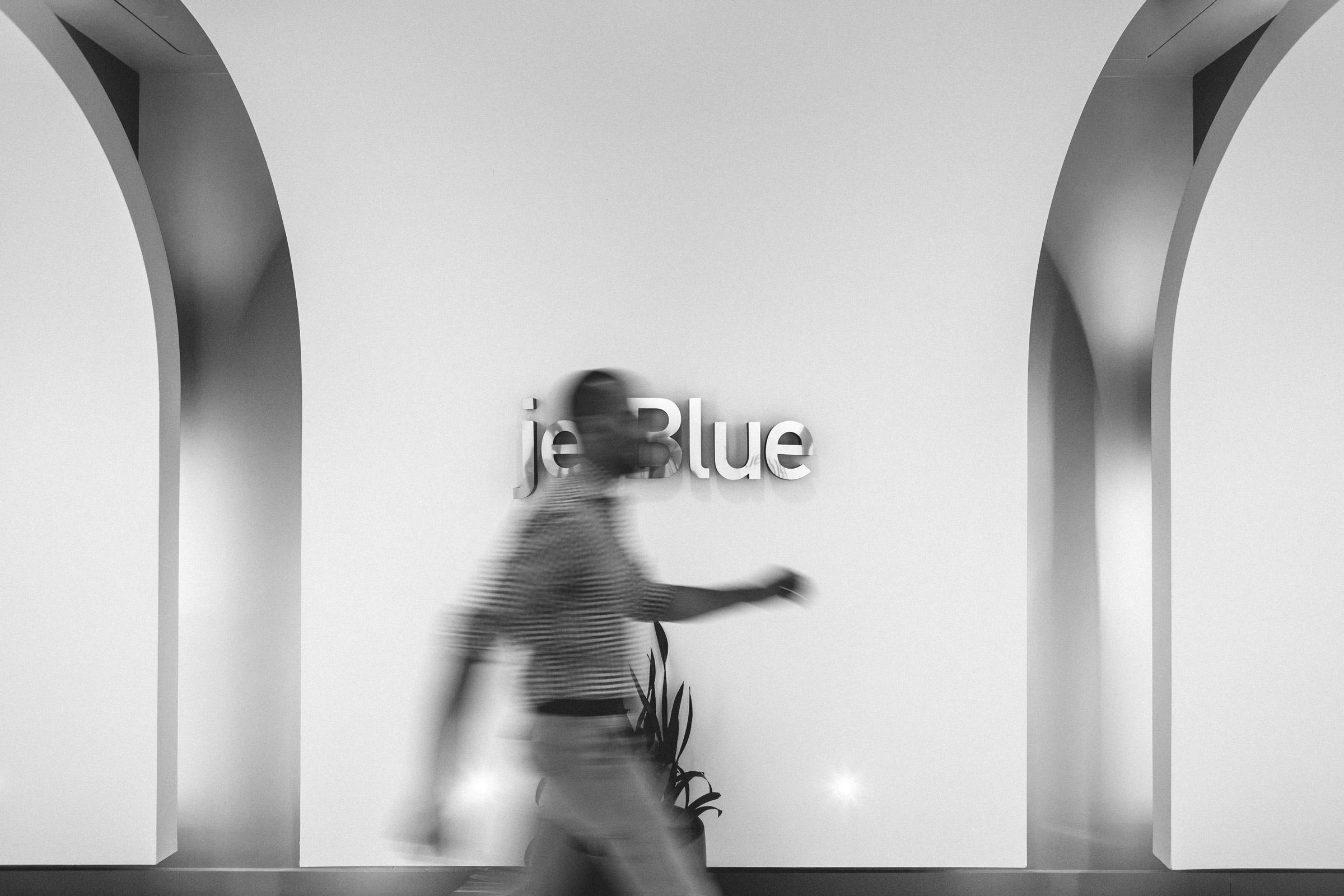
Can you give us a brief history of the JetBlue film team?
Jonathan Weitz, Creative Manager/Filmmaker: When I started at JetBlue, there was no film team. There was one person doing video, and she had sort of fallen into it. She had a passion for it, but she wasn’t a professional filmmaker. She eventually moved on, and I was here doing things on my own. That’s when I had the opportunity to start building the team.
One of our CEO’s favorite quotes is “Complacency is the enemy of progress.” It’s interesting to think that just a few years ago this video team didn’t exist. But I don’t stop to think about it too much because I always want to be looking forward. The way people think about video at JetBlue is much different now than it was before. This is the era of content, and content is completely different than advertising. We’re not creating TV campaigns. We’re creating day-to-day content. And to me, that’s pretty cool.
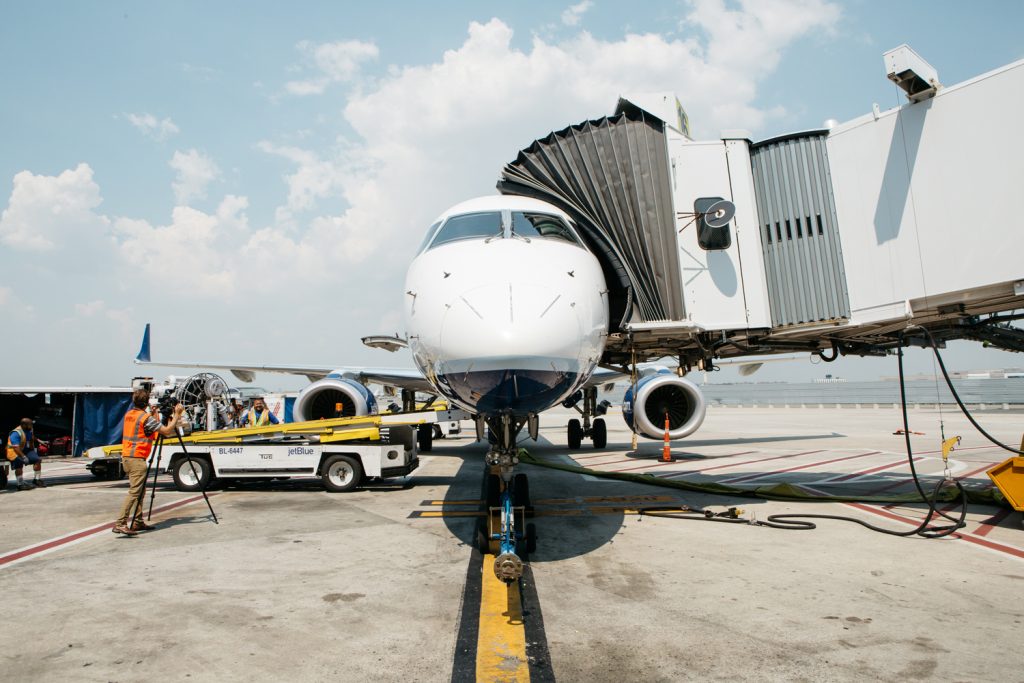
What type of filmmaker were you looking for when you built the team?
Jonathan: The challenge with in-house creative teams is that we don’t have the luxury of turning down projects that don’t inspire us. We can propose different approaches to a video but it’s rare we get to turn one down. So when I started building the team, I purposefully hired filmmakers who are completely different than me, but still complement me; who are completely different from each other, but still complement each other. I wanted to always have the perfect filmmaker on hand for every project.
What’s the culture like on the JetBlue film team?
Chelsea Moynehan, Filmmaker: We’re a small team — three filmmakers, a graphic/motion graphic designer, and an intern — but we have a massive amount of projects coming at us all the time. Our method is to divide and conquer. Most of the time we’re directing, producing, shooting, and editing our own projects. But we’re all very supportive of each other. There’s no competition here. We’re all in it for the same reason. Nobody is trying to be better than anyone else. We all share assets and work together to communicate ideas.
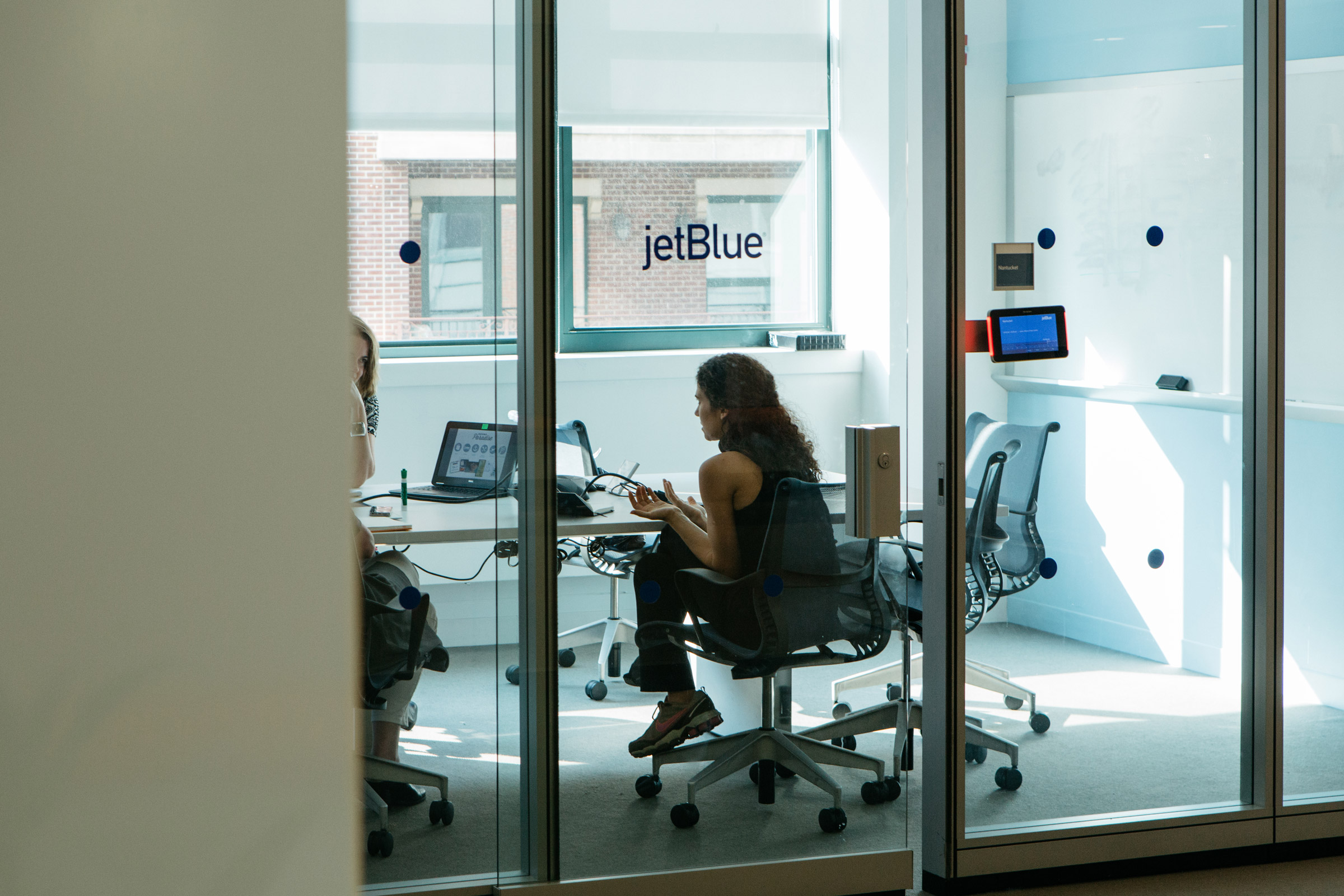
When you work for a really strong brand, you want to protect that brand. We’re stewards of the brand, and we hold that very near and dear to our hearts.
With so many projects coming across your desk, how do you stay inspired for each one?
Jonathan: We try to put our hearts into everything we do — or, at the very least, find little things that make it interesting. Like filming a pilot inside a cockpit instead of some corporate office. It’s more visually interesting and a lot more fun.
Chelsea: We all try to stick to our strengths. We make a connection with the subject or find something about the project we personally connect with. That’s sort of how we determine who is working on which project.
Zack Caplan, Filmmaker: When you work for a really strong brand, you want to protect that brand. We’re stewards of the brand, and we hold that very near and dear to our hearts.
You guys work within a large company but seem to retain a lot of agility.
Jonathan: One of the cool things about the JetBlue brand is that we’re timely and relevant. I believe the key to that is really good content. For example, we’ve had a brutal summer here in New York. One of the hottest summers on record. So in the middle of one of the heat waves, we decided to go to the airport and shoot a cinemagraph. Just a really quick social post to thank our crew members for working in the heat. We were able to put the whole thing together in just one day. That’s hard to do without an in-house team. It’s a competitive advantage.

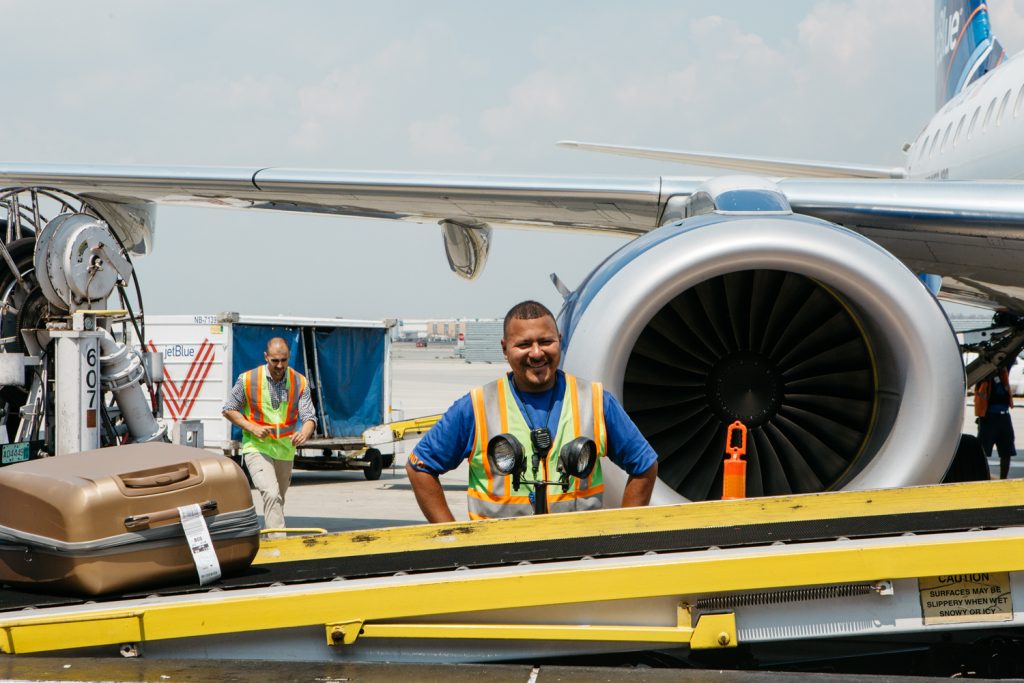
Are personal projects important to you guys?
Jonathan: I personally encourage them. I give Chelsea and Zack what’s called a culture goal, which is an opportunity for them to create a video that benefits someone or some organization in a community we serve. So Zack worked on a project with Arnold Palmer. And Chelsea, she uses her free flights as a tool for the next film she’s making: a documentary about her father.
Zack: I see JetBlue as a great opportunity. Chelsea has been flying all over and working on her next documentary. I’ve learned from that and started upping my game. I learned from Chelsea that you can go beyond what’s given to you day to day.
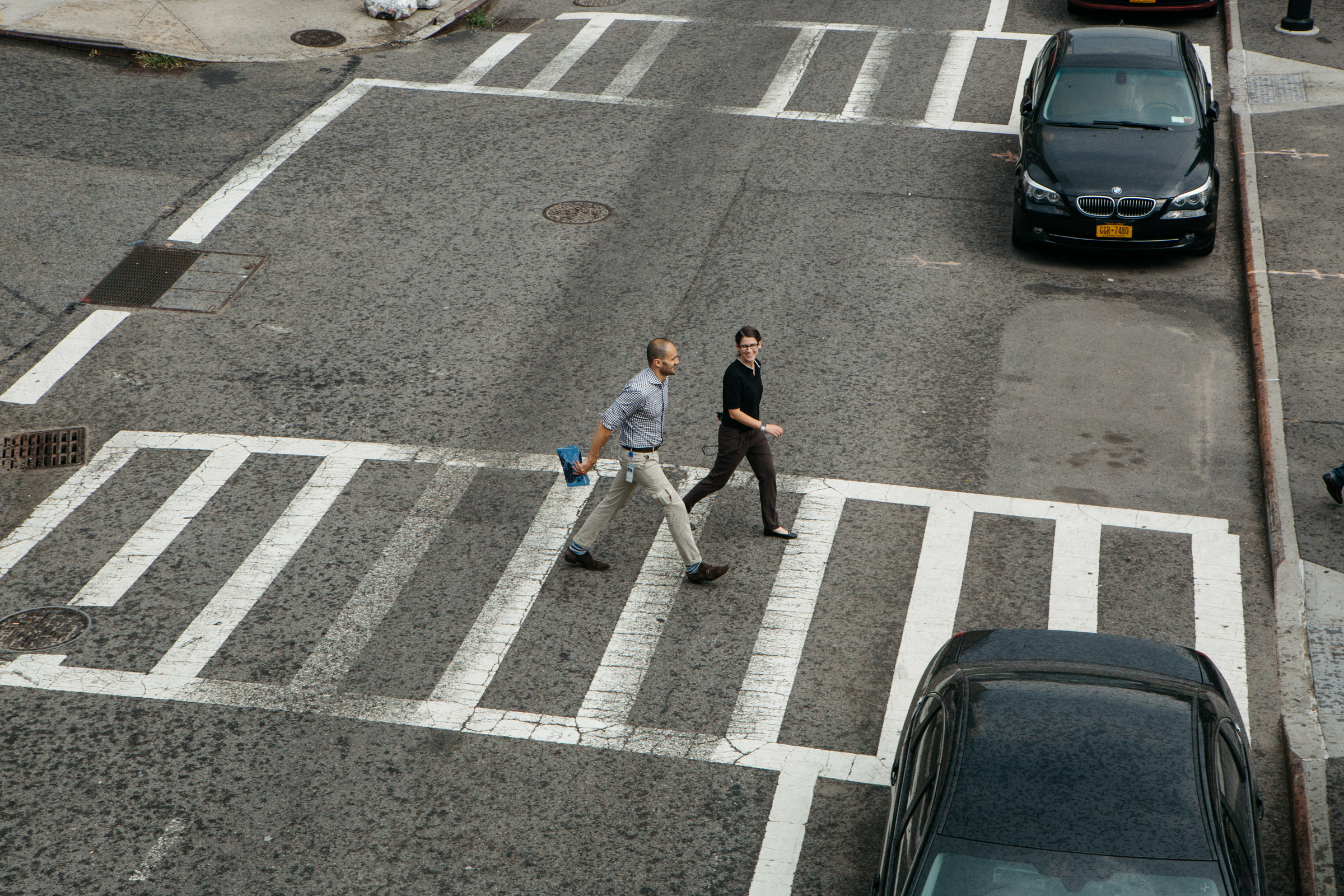
What advice would you give about building successful creative teams?
Jonathan: A successful creative team, for me, is made up of folks who are willing to roll up their sleeves, get it done, and help out in unexpected ways. No one should ever say these four words: “That’s not my job.” I cringe when I hear someone use that phrase, or when I hear someone complain about a task they were asked to do. One small thing we all do is help inflight crewmembers (flight attendants) clean the airplane after we’ve been traveling. The whole company does it. It shows a lot of respect and empathy even though it’s “not our job.”
Another important thing is finding people who are different but also the same. Everyone should complement each other. If we were all alike, we’d look at every project through the same lens, and every video would look the same. But when you hire people who love different types of work and genres, you not only create more interesting work, but when diverse projects come through, someone usually says, “I’ll totally take that on!”
In terms of being the same, I’m talking about values and character: lending a helping hand, always bringing a positive mental attitude to work, paying attention to how something is worded in an email, and living our values (safety, caring, integrity, passion, and fun). It’s important that we all have those core character traits.
Feelings matter. We must always be cognizant of what we say, how we say it, what we do, and how we make each other feel. I love this Maya Angelou quote: “I’ve learned that people will forget what you said, people will forget what you did, but people will never forget how you made them feel.” Conflict is part of the creative process. And I encourage people to challenge each other all the time. But it’s never done in a hostile way. It’s done in a more thoughtful, artful way.
And finally, great creative teams are built on empowerment. People need to feel empowered to make decisions. Chelsea and Zack need to feel confident and willing to think and act without me. They need to act quickly without worrying about coming straight to me for everything. It’s important that I make them feel empowered to make decisions and do the right thing.
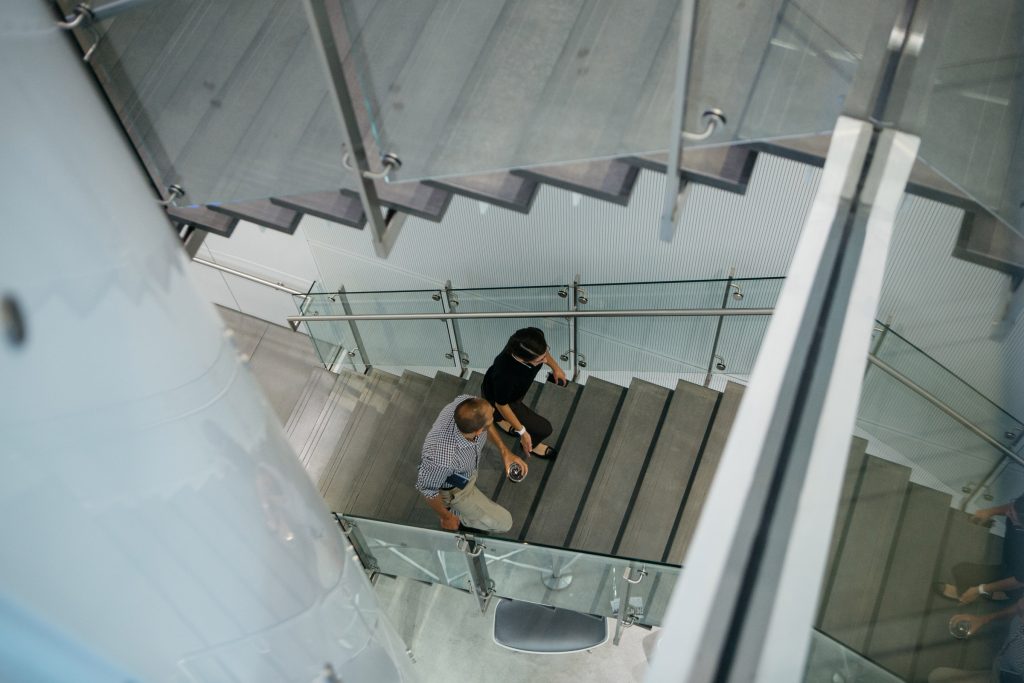
Why do you use Musicbed?
I love the story behind things. And that’s why I buy music from Musicbed. I love the stories of these artists. The music is authentic. It’s real. It’s emotional.
When we were putting together our style guide recently, we included a chapter about music. And because we’d worked with Musicbed on so many projects, we asked you guys to help us define our sound. Music is an integral part of the feel and style of JetBlue videos, and it’s all based on the guidelines that Musicbed helped establish.

It’s an honor to work with a brand that’s so committed to excellence. Jonathan has built a team at JetBlue who pushes each other to create better work every day, whether it’s shooting B-roll for major Hollywood films, launching viral campaigns, creating internal-facing videos, working on their own personal projects, or just rallying the troops for a spur-of-the moment cinemagraph. These guys are setting the standard for in-house creativity.















































































